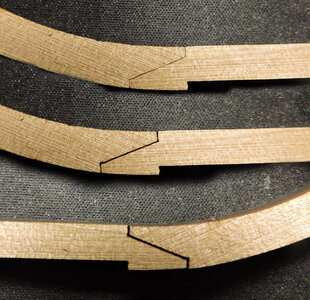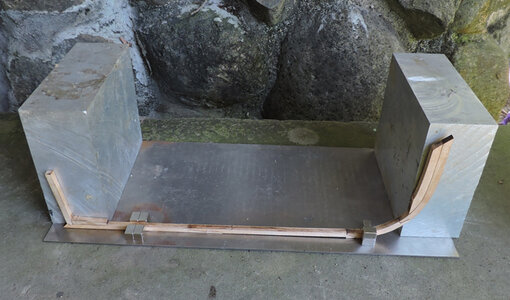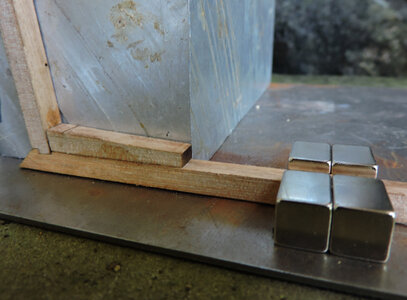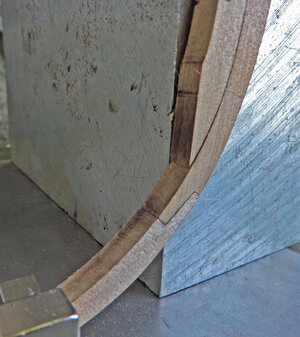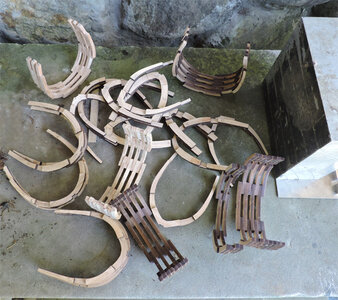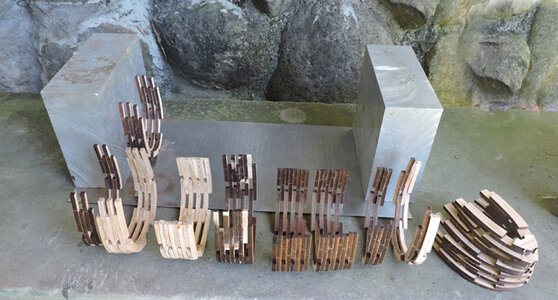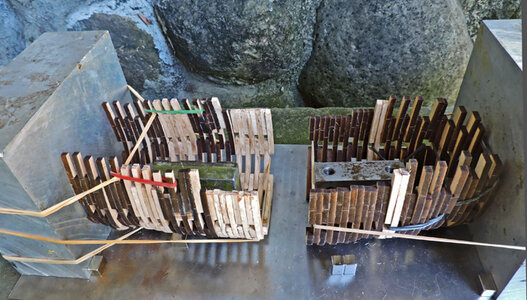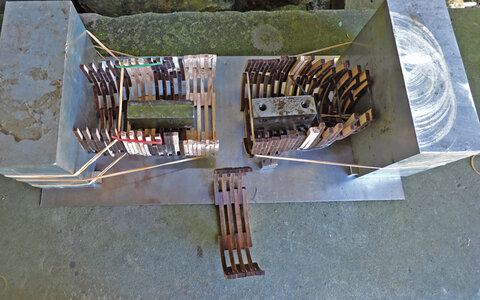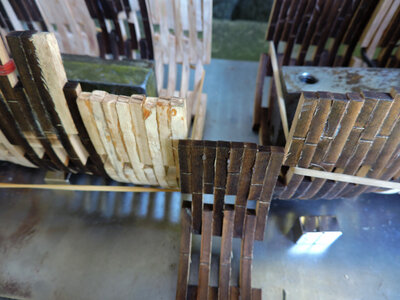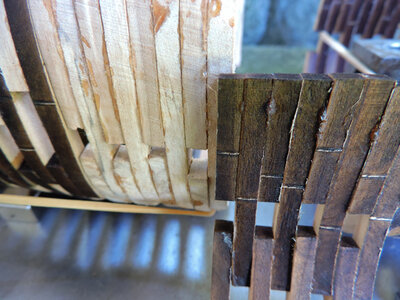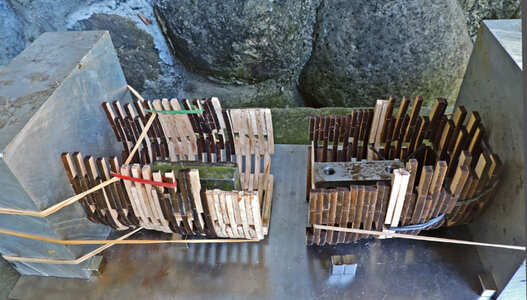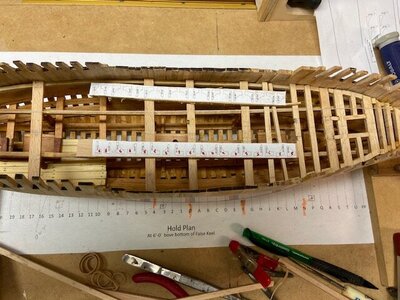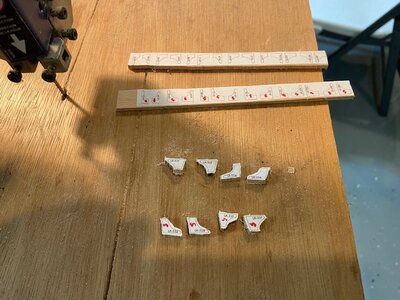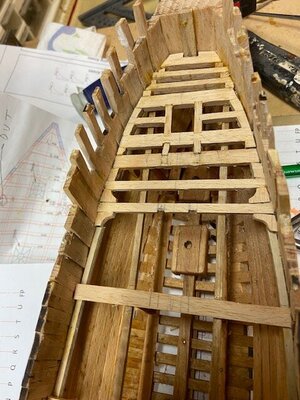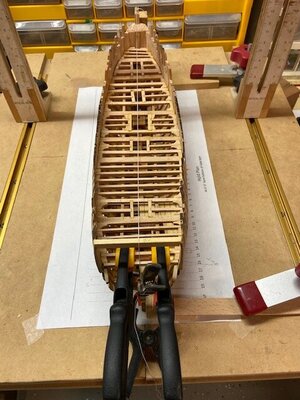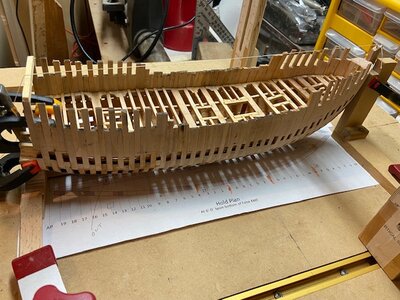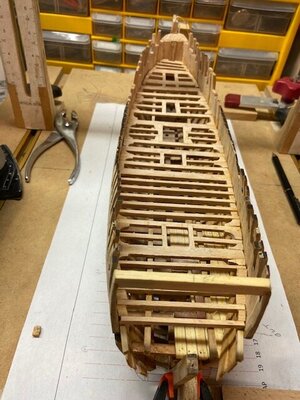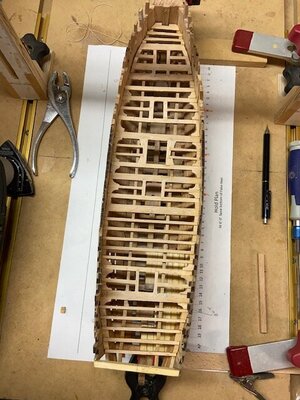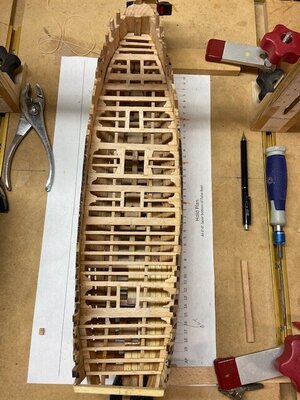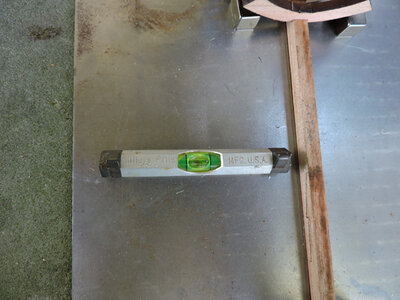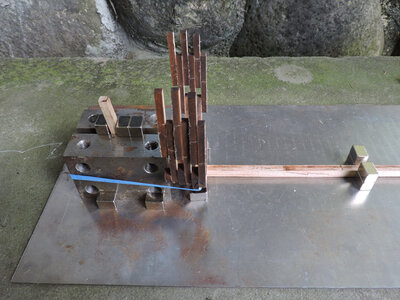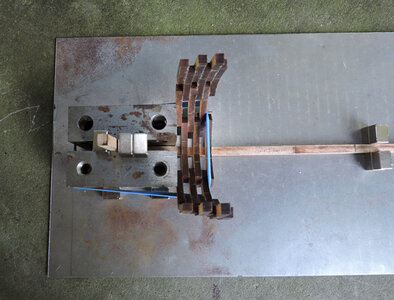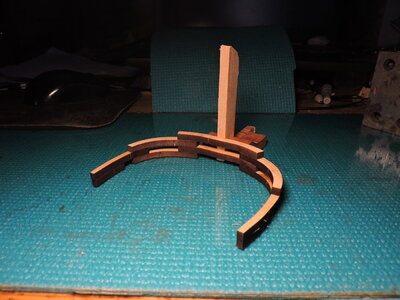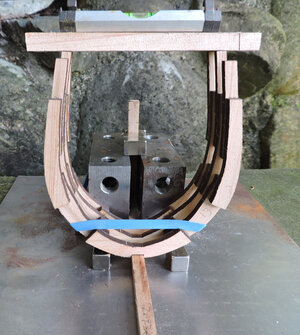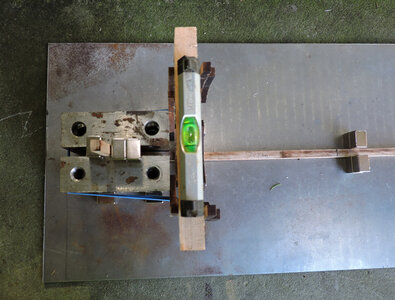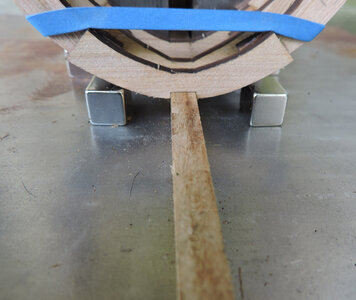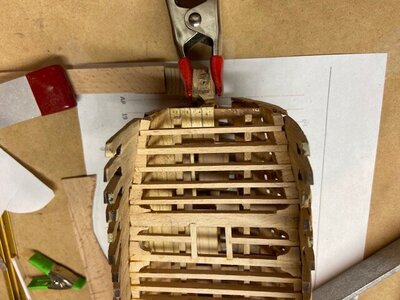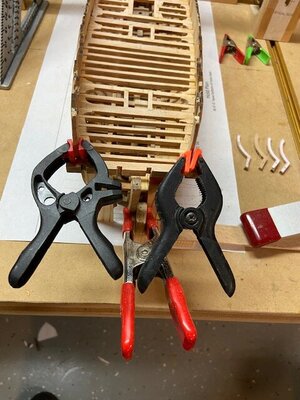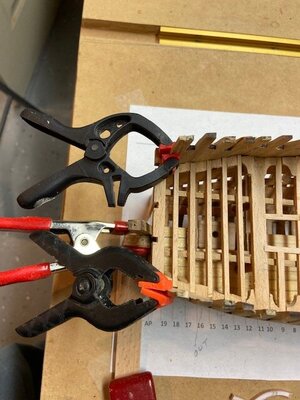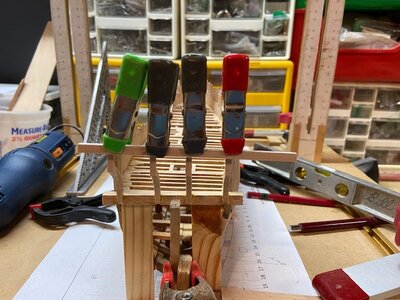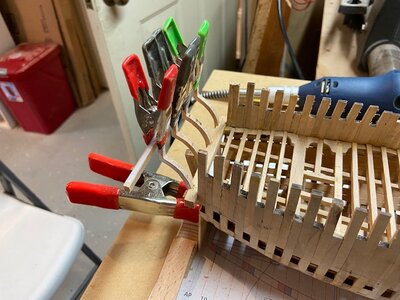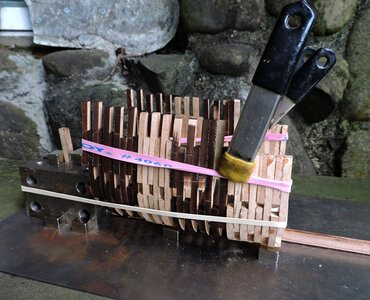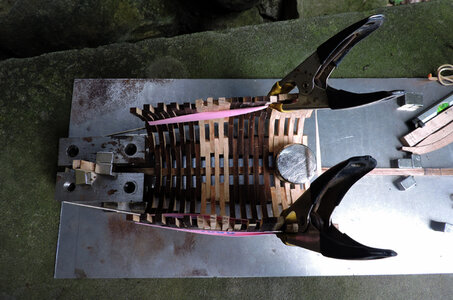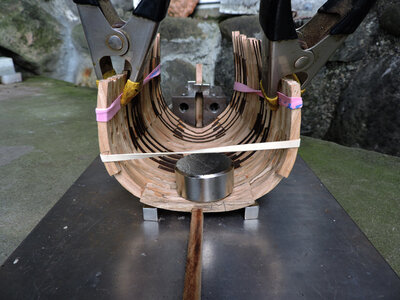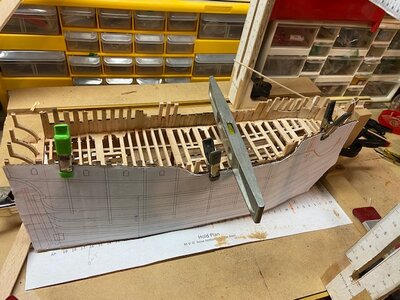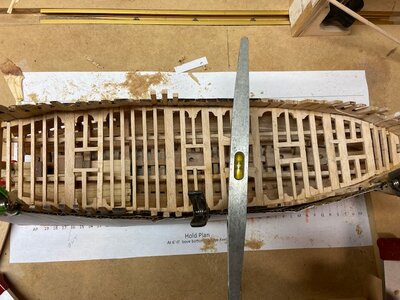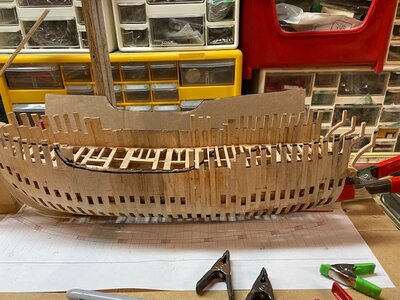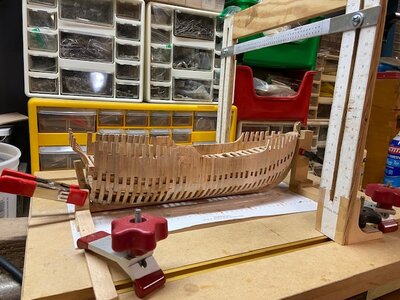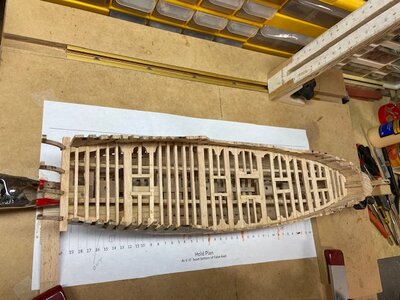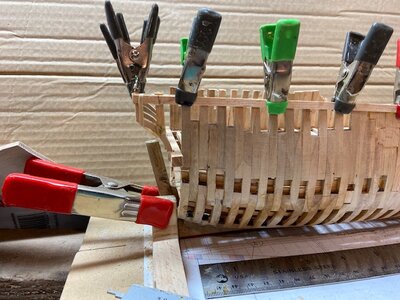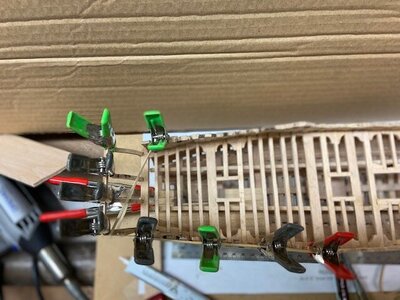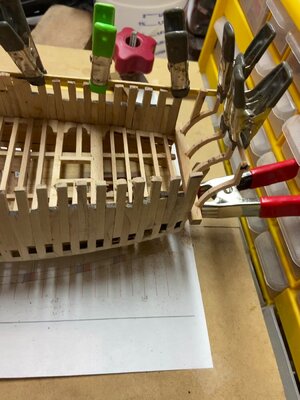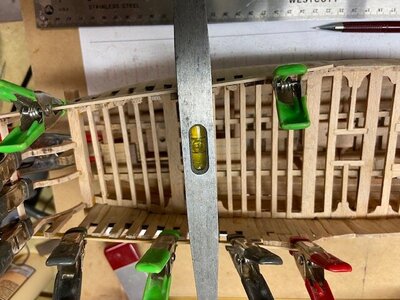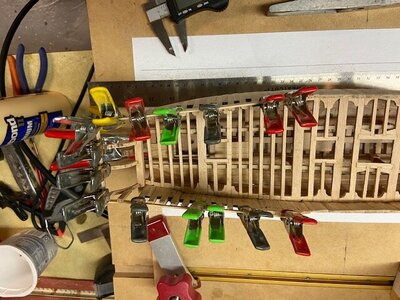I have used magnets for frames and small deck items, but they were not strong enough to do what Dave is using them for. I ordered some of the super magnets from Amazon today, they are about a $1.00 each and expect to use them on my next project
it would take 70 pounds of pull strength to lift these frames. Notice the chips, that is from the magnet slamming into other things.
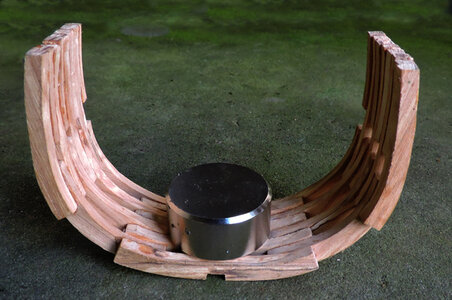
this is the size i am using as a jig. stuck to the bed plate it takes about 30 pound pull force, but because there is wood between the bed plate and the magnet the force is reduced.
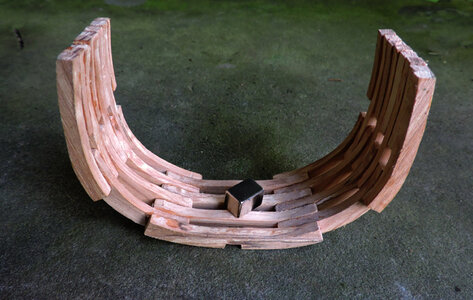
these come in strengths from N35 to N52 and depending on size their pull strength will vary from 19 pounds to 75 pounds and up
Magnet pull strength is the
highest possible holding power of a magnet,. It is the force required to pull a magnet away from a flat steel surface when the magnet and metal have full and direct surface-to-surface contact. The grade of the metal, surface condition and angle of pull all have an impact on the pull strength.

this little 3/4 inch cube has a strength of 75 pounds

pull strength 19 pounds

strength 35 pounds
Magnet Safety
Neodymium magnets must be handled with care to avoid personal injury and damage to the magnets. Fingers and other body parts can get severely pinched between two attracting magnets. Bones can be broken by larger magnets.
Neodymium magnets are brittle. They can peel, crack or shatter if allowed to slam together. Eye protection should be worn when handling these magnets, because shattering magnets can launch pieces at great speeds and sparks may be produced.
The strong magnetic fields of neodymium magnets can also damage magnetic media such as floppy disks, credit cards, magnetic I.D. cards, cassette tapes, video tapes or other such devices. Electronics such televisions, VCRs, computer monitors and other CRT displays can also be damaged.
Children should not be allowed to play with neodymium magnets as they can be dangerous. Small magnets pose a choking hazard and should never be swallowed or inserted into any part of the body.
Never allow neodymium magnets near a person with a pacemaker or similar medical device. The strong magnetic fields of the magnets can affect the operation of such devices.
Neodymium magnets are brittle and prone to chipping and cracking. Machining, drilling or other mechanical alterations are not recommended.
Neodymium magnets will begin to lose their magnetic properties if heated above 176° F (82° C).
The Bottom Line: Like any tool, neodymium magnets can be useful and educational, but must always be treated with care.

